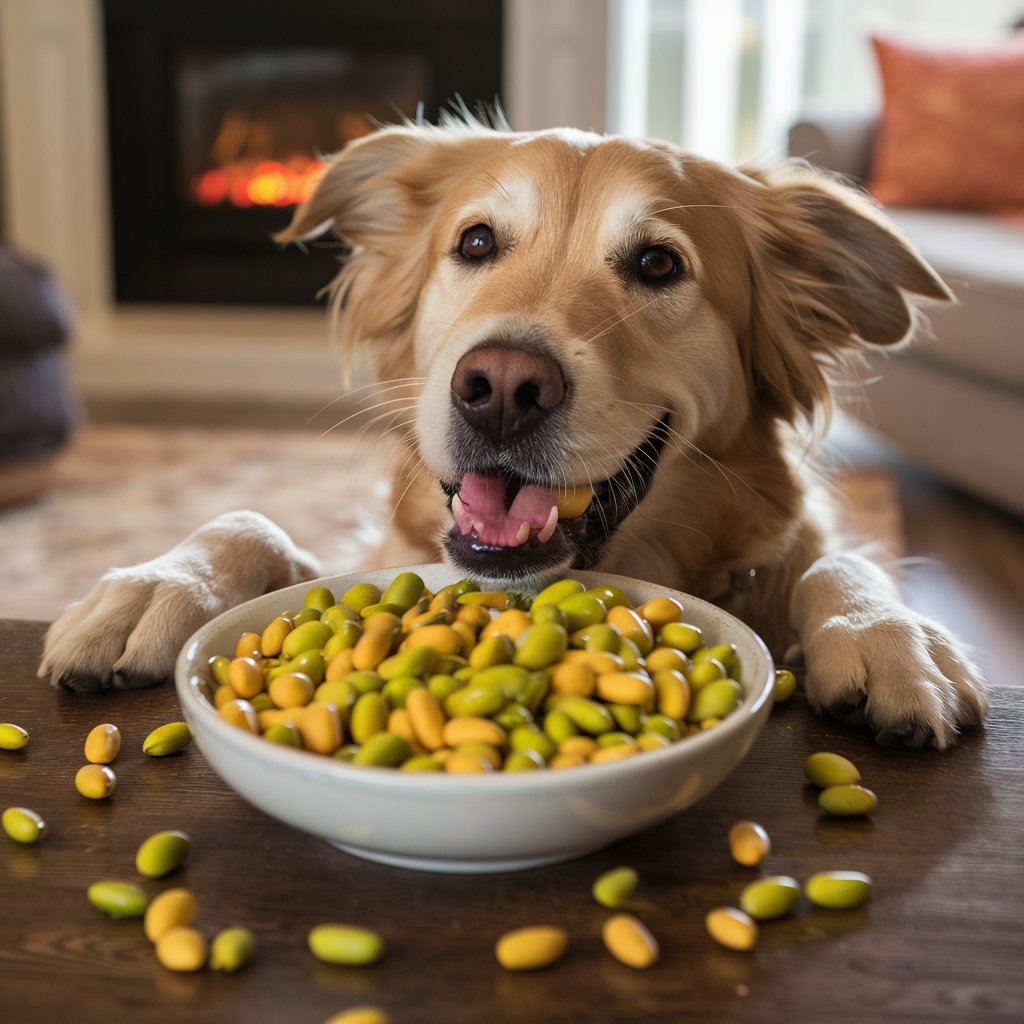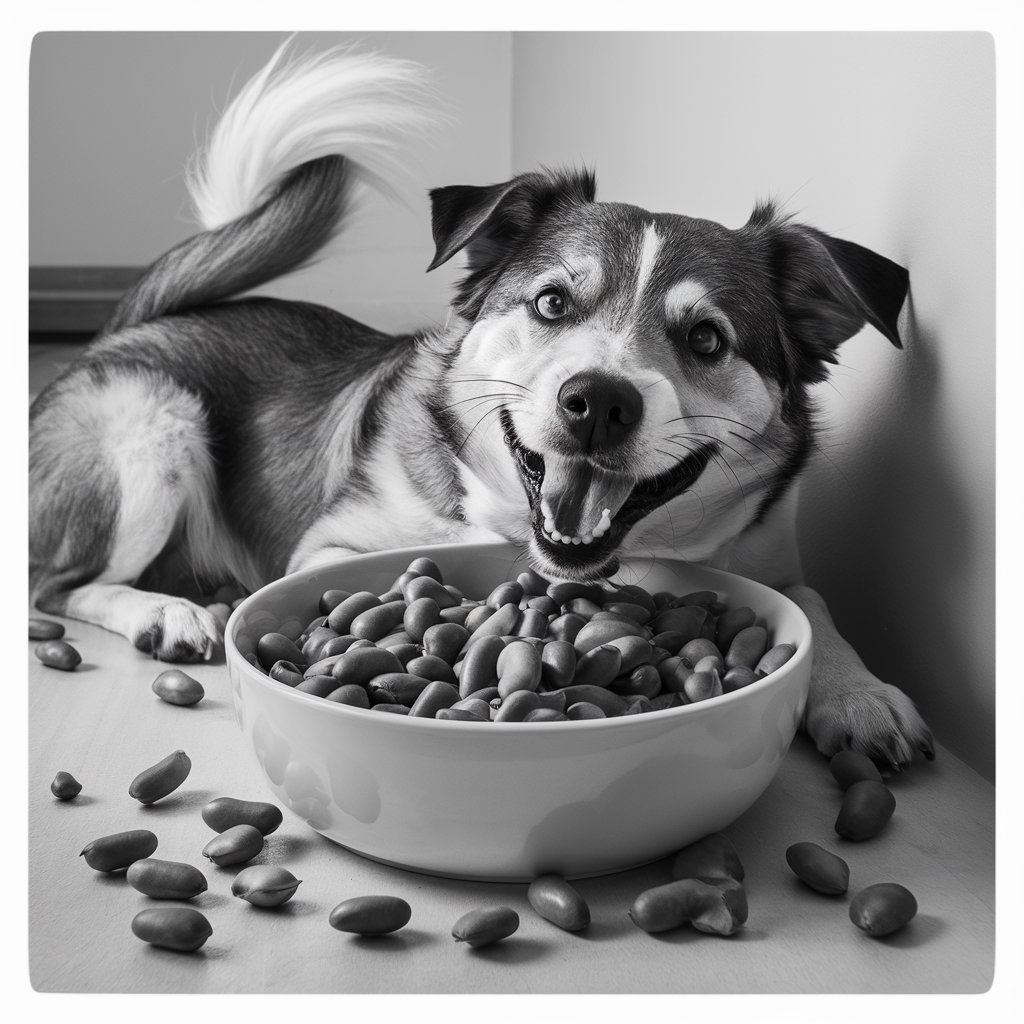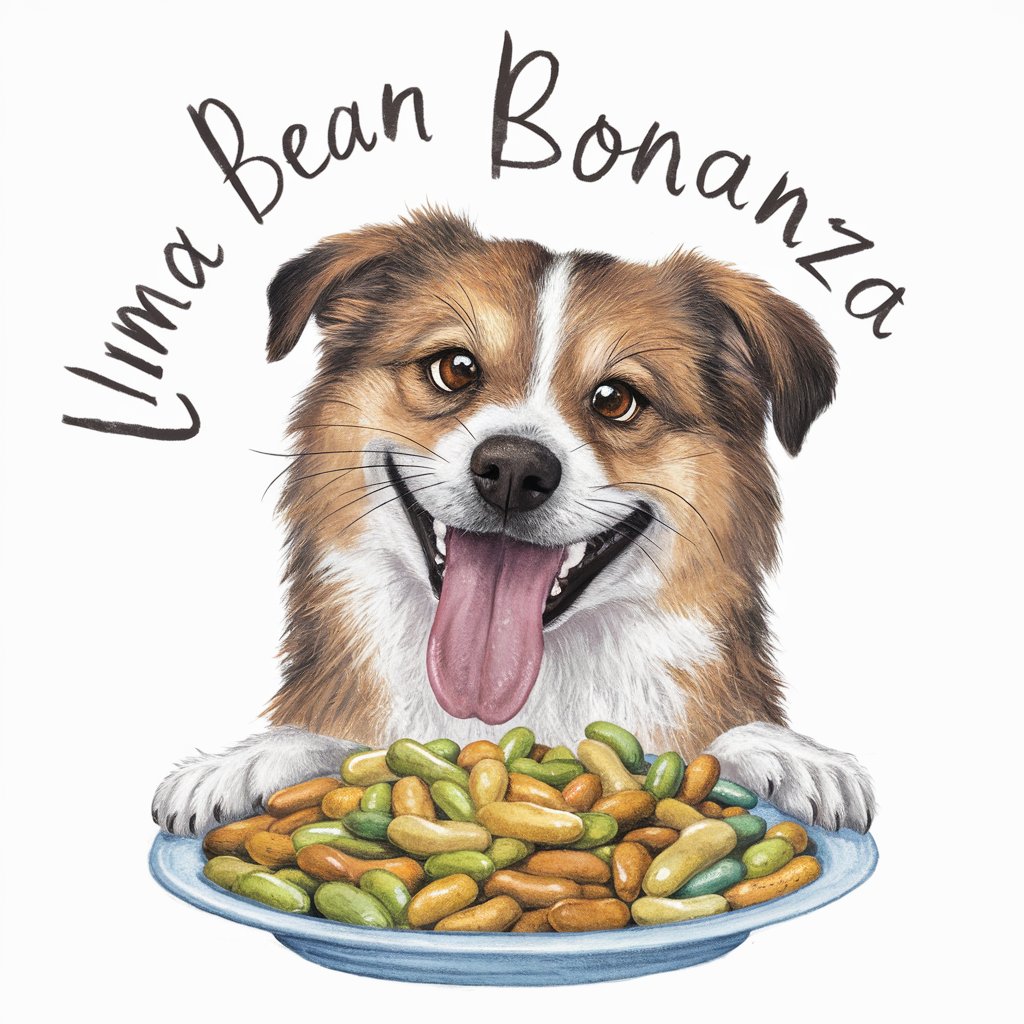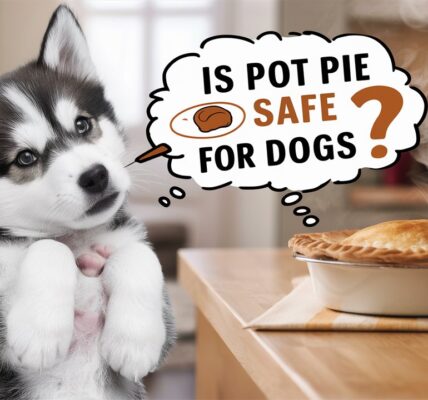
Can Dogs Eat Lima Beans
Can Dogs Eat Lima Beans? Lima beans, when cooked thoroughly and served plain, are generally safe for dogs in moderation. They provide beneficial nutrients like protein and fiber but should not be a primary food source. Avoid giving raw lima beans due to toxic lectins and be cautious of overfeeding to prevent digestive upset. Always consult your veterinarian when introducing new foods into your dog’s diet.
Lima beans, often referred to as butter beans due to their smooth texture and mild flavor, are a popular vegetable in many human diets. Their nutritional profile makes them a tempting option to consider for your canine companion. However, before sharing lima beans with your dog, it’s important to understand the potential benefits and risks. This detailed guide will help you navigate the world of lima beans and determine if they can be a healthy addition to your dog’s diet.
Nutritional Profile of Lima Beans
Lima beans are packed with nutrients that can be beneficial for both humans and dogs:
- Protein: Lima beans are a good source of plant-based protein, essential for muscle development and repair. Protein is a crucial component of a dog’s diet, but dogs primarily need animal-based proteins, so lima beans should only supplement their main food.
- Fiber: High in dietary fiber, lima beans can aid in digestion and help maintain bowel regularity. While fiber is beneficial, too much can lead to gastrointestinal issues, so moderation is key.
- Vitamins: Lima beans are rich in B vitamins, such as folate (B9), which supports cell function and growth, and vitamin B6, which aids in metabolism and cognitive function.
- Minerals: They contain important minerals like iron, which supports oxygen transport in the blood; magnesium, which is crucial for muscle and nerve function; and potassium, which helps maintain fluid balance and proper muscle function.
Are Lima Beans Safe for Dogs?
While lima beans are generally safe for dogs when prepared properly, there are several factors to consider:
- Raw Beans Are Toxic: Raw lima beans contain lectins, a type of protein that can be toxic to dogs and humans. Lectins can cause nausea, vomiting, and diarrhea. Cooking lima beans thoroughly breaks down these toxic compounds, making them safe for canine consumption.
- Proper Preparation: To safely prepare lima beans for your dog:
- Cook Them Well: Boil or steam the beans until they are fully cooked. Avoid using methods that add fat or salt.
- Avoid Seasonings: Do not add salt, butter, or any other seasonings. These additives can be harmful to dogs and may lead to health issues such as sodium poisoning or pancreatitis.
- Portion Control: Lima beans should be introduced into your dog’s diet in small amounts. A few beans as a treat or mixed into their regular food can be sufficient. Overfeeding lima beans can lead to digestive upset, including gas, bloating, or diarrhea.
- Allergies and Sensitivities: As with any new food, monitor your dog for any signs of an allergic reaction or intolerance. Symptoms to watch for include itching, swelling, or changes in stool. If you notice any adverse reactions, discontinue feeding lima beans and consult your veterinarian.
- Digestive Health: While fiber is beneficial, excessive fiber intake can lead to digestive issues. Ensure that lima beans do not make up a significant portion of your dog’s diet to avoid potential gastrointestinal problems.

Potential Health Benefits: Can Dogs Eat Lima Beans
When fed in moderation, lima beans can offer several health benefits to dogs:
- Digestive Health: The fiber in lima beans can support healthy digestion and prevent constipation.
- Nutrient Boost: The vitamins and minerals in lima beans contribute to overall health and well-being, supporting various bodily functions.
- Weight Management: The high fiber content can help your dog feel full, which may be useful for weight management when used as a healthy treat alternative.
Risks and Precautions
While lima beans can be a healthy treat, there are risks if not prepared or fed properly:
- Toxicity from Raw Beans: Always ensure that lima beans are thoroughly cooked to eliminate any potential toxins.
- Gastrointestinal Upset: Overfeeding can lead to digestive issues, so it’s important to offer them in moderation.
- Seasonings and Additives: Avoid any form of seasoning or additives that could harm your dog.
Consulting Your Veterinarian
Before introducing any new food into your dog’s diet, including lima beans, it is always advisable to consult with your veterinarian. They can provide guidance based on your dog’s specific health needs, dietary restrictions, and overall health condition.

Can Dogs Eat Lima Beans? Comparing Lima Beans with Green Beans and Baked Beans
When considering adding new foods to your dog’s diet, it’s important to understand how different options stack up in terms of safety, nutritional benefits, and potential risks. Lima beans, green beans, and baked beans are three popular choices, each with its own set of characteristics. Here’s a detailed comparison to help you make informed decisions about what’s best for your canine companion.
Lima Beans
Nutritional Profile:
- Protein: Good source of plant-based protein.
- Fiber: They are supportive in digestion.
- Vitamins and Minerals: Rich in B vitamins (including folate and B6), iron, magnesium, and potassium.
Safety and Preparation:
- Raw Beans: Toxic due to lectins; always cook thoroughly.
- Seasonings: Should be served plain; avoid adding salt, butter, or other seasonings.
- Portion Control: Safe in small amounts; too much can cause digestive issues.
Health Benefits:
- Supports digestive health due to fiber.
- Provides vitamins and minerals that are vey important for overall health.
Risks:
- Raw beans are toxic.
- Overfeeding can lead to gastrointestinal upset.
Green Beans
Nutritional Profile:
- Protein: Lower in protein compared to lima beans.
- Fiber: Good source of fiber.
- Vitamins and Minerals: Contains vitamins A, C, and K, as well as minerals like calcium and iron.
Safety and Preparation:
- Raw Beans: Generally safe in small amounts; cooking can be beneficial to enhance digestibility.
- Seasonings: Serve plain; avoid adding any salt, seasoning, or oils.
- Portion Control: Safe to feed in larger quantities compared to lima beans, but still should be given in moderation.
Health Benefits:
- They are low in calories and very good option for the weight management.
- Rich in vitamins that support immune health and bone strength.
Risks:
- Excessive amounts can lead to gastrointestinal issues.
- Avoid feeding canned green beans that may contain added salt or preservatives.
Baked Beans
Nutritional Profile:
- Protein: Contains some protein, but often less than lima beans and green beans.
- Fiber: Includes fiber, though often less than lima beans and green beans.
- Vitamins and Minerals: Varies depending on ingredients; often high in sugar and salt.
Safety and Preparation:
- Raw Beans: Baked beans are pre-cooked, but they often contain ingredients that are not suitable for dogs.
- Seasonings: Typically high in added sugars, salt, and other additives, making them unsuitable for dogs.
- Portion Control: Generally not recommended due to unhealthy additives.
Health Benefits:
- Limited health benefits for dogs due to the presence of added sugars and salt.
Risks:
- High sodium and sugar content can be harmful to dogs.
- May contain other ingredients like onions or garlic, which are toxic to dogs.
Comparative Summary
- Nutritional Value: Lima beans and green beans both provide valuable nutrients and fiber, but lima beans are richer in protein and certain vitamins. Green beans offer a good range of vitamins and minerals with fewer calories.
- Safety: Green beans are generally safe and can be served raw or cooked, whereas lima beans must be cooked thoroughly to eliminate toxins. Baked beans are not recommended for dogs due to unhealthy additives.
- Preparation: Both lima beans and green beans should be served plain without seasonings. Baked beans, however, should be avoided entirely due to their harmful additives.
- Health Benefits: Lima beans can support digestion and provide a nutrient boost, while green beans offer a low-calorie treat that supports weight management. Baked beans lack significant health benefits for dogs and pose several risks.

| Aspect | Lima Beans | Green Beans | Baked Beans |
|---|---|---|---|
| Nutritional Profile | – High in protein | – Lower in protein | – Some protein, less than lima and green beans |
| – High in fiber | – Good source of fiber | – Fiber content varies | |
| – Rich in vitamins (B9, B6) and minerals (iron, magnesium, potassium) | – Vitamins A, C, K; calcium, iron | – Varies; often high in sugar and salt | |
| Safety | – Must be cooked thoroughly to remove lectins | – Generally safe; can be served raw or cooked | – Not recommended due to unhealthy additives |
| Preparation | – Cook well; serve plain | – Serve plain; avoid canned versions with added salt | – Avoid due to additives like sugar and salt |
| Portion Control | – Safe in moderation; overfeeding can cause digestive issues | – Safe in moderate to larger quantities | – Should be avoided entirely |
| Health Benefits | – Supports digestion; provides vitamins and minerals | – Low-calorie; supports weight management | – Limited benefits; high in sugars and salts |
| Risks | – Raw beans are toxic; overfeeding can cause gastrointestinal upset | – Excessive amounts can lead to digestive issues | – High sodium and sugar; may contain harmful additives |
Conclusion: Can Dogs Eat Lima Beans
Lima beans can be a nutritious addition to your dog’s diet when prepared correctly and offered in moderation. They provide a range of vitamins, minerals, and fiber that can contribute to your dog’s overall health. However, due to potential risks associated with raw beans and digestive issues from overconsumption, it’s crucial to prepare them properly and monitor your dog’s response.
FAQs: Can Dogs Eat Lima Beans
- Are cooked lima beans good for dogs?
Yes, cooked lima beans are generally safe for dogs in moderation, offering protein and fiber. Ensure they are cooked thoroughly and served plain. - What beans can dogs not eat?
Dogs should avoid raw beans, including lima beans, kidney beans, and broad beans, due to toxic lectins. Also, avoid baked beans and refried beans with added seasonings. - Which beans are good for dogs?
Cooked green beans, black beans, and pinto beans are good options. Serve them plain and in moderation for added nutrients and fiber. - What vegetables can dogs eat?
Dogs can eat carrots, green beans, peas, and sweet potatoes. Always serve vegetables cooked or raw in small, manageable pieces. - Can dogs eat canned tuna?
Yes, dogs can eat canned tuna in moderation, but choose tuna packed in water without added salt. Avoid tuna packed in oil or with added seasonings. - Are refried beans ok for dogs?
No, refried beans are not recommended due to their high salt, fat content, and potential additives. Stick to plain, cooked beans without seasonings.

Jahanzaib Kaleem is a passionate and knowledgeable pet writer and veterinarian dedicated to enhancing the well-being of pets and educating pet owners around the world. With years of experience in veterinary medicine and a deep love for animals, Jahanzaib combines his medical expertise with a flair for writing to deliver insightful and practical advice on pet care.





